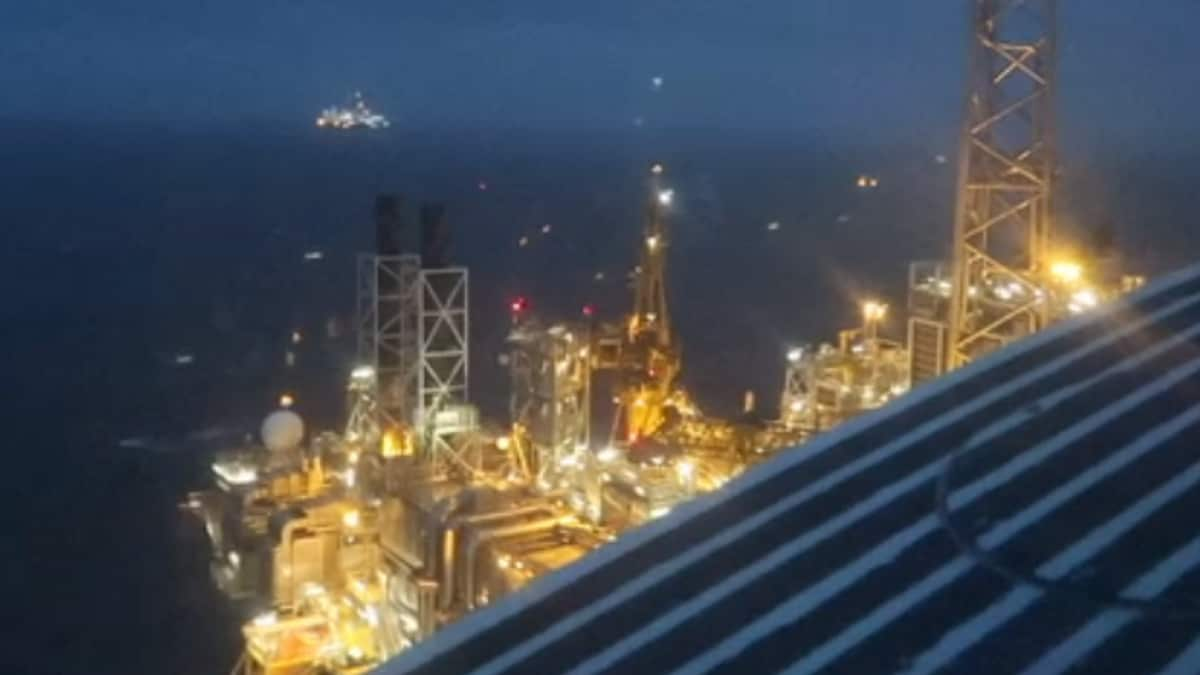Oil platforms “steal” electricity from green factories on land – NRK Norway – Overview of news from different parts of the country
Ronny Haufe has the drawings and financing ready. Enova, the state’s fond of climate-friendly investments, has spit in 77 million alone.
The plan is to build the first hydrogen factory in Europe.
It will produce hydrogen from natural gas and electricity, where CO₂ is captured at the same time. Hydrogen is also a fuel that does not slipper out anything other than pure water. The CO₂ must be removed in the planned factory in Øygarden municipality. But one thing can stop Ronny Haufe’s plan:
– As of today, we do not have enough electricity to operate such a factory, Haufe says.
Ronny Haufe is ready to finance the construction of the first commercial hydrogen factory in Europe, which will produce hydrogen from natural gas and electricity. Photo. Gerd Braadland
Fight for power
Many want to start a new green industry along the Norwegian coast, such as hydrogen factories, farming on land and battery factories. These need a lot of power. At the same time, the oil platforms in the North Sea will be electrified.
The problem is that there is not enough power for both. The high-voltage lines that carry electricity from the power plants inside the fjords do not have enough capacity for both the platforms and new industries along the coast.

The power for the Troll field is obtained by Equinor from the hydropower plants inside the fjords. The power then goes in masts or cables out to Kollsnes in Øygarden, and from there it will send on by submarine cable out to the Troll field. Graphics: Joakim Digernes-Nordstrøm
– It’s a race for time. Because many of these green industries that are showing interest in establishing themselves out here are international industry. But they need to know that they are getting the power they need. If you can not see elsewhere, says hydrogen entrepreneur Haufe.
Electricity he and others would have liked to use is now laid in cable past his factory site, and out to the platforms in the sea.
Pollutes as much as 250,000 cars
The Troll C platform, located 50 kilometers west of Bergen, is the first to be electrified. Work on removing the gas-fired power plant on the platform, and the first with electricity from land, began this autumn.

The Troll C platform (pictured) uses enormous amounts of energy to pump up oil from the seabed. Today, the platform operates a large gas-fired power plant on board. This must be removed and replaced with electric power via cable from shore.
The Troll platforms are among Norway’s biggest polluters, says Equinor’s climate manager, Henriette Undrum.
– Trolls B and C slice out more than 700,000 tonnes of CO₂ a year. When we electrify, we will remove 500,000 of these from the climate accounts for Norway. This corresponds to 1 percent of Norway’s total emissions of CO₂ annually, she says.
Put another way: The cut corresponds to pollution from 250,000 cars. If everything goes according to plan, the Troll platforms will operate hydropower from land in 2024. Undrum still understands frustration for those who do not get electricity for their industrial projects inland.
– We see that the power situation in the West Norway region is demanding. We also believe that it is possible to electrify both to restructure the current oil and gas industry, at the same time as we get enough electricity to build new industry.
Undrum believes this can be solved by expanding more power production, including offshore wind. In addition, she believes that Statnett must increase the capacity of the power grid, so that there will be enough power for new industry also off the coast.
The Conservative mayor hopes for Støre
The mayor of Øygarden, Tom Georg Indrevik (H) sees the climate argument with electrification. However, he believes that it is wrong to prioritize the platforms now.

Mayor of Øygarden Tom Georg Indrevik (H) hopes the new government will prioritize jobs on land before electrifying the oil platforms. Photo: Gerd Braadland
– I think the state must postpone the electrification of the shelf until we have enough power available out here along the coast, says Indrevik.
The mayor leads a municipality with 38,000 inhabitants. Many of them today work on the platforms out at sea. He is worried about what the inhabitants will drive with when the oil adventure one day ends.
– It does not create more jobs on a platform that it is electrified. While here on land we can get between 1000 and 1500 new jobs. But then we are dependent on the power being prioritized for land-based industry.

Troll C is the first gas-powered platform in the North Sea to be electrified. Work began in the autumn of 2021.
Photo: Eilif Stene / StatoilHydro / Eilif Stene
The Conservative mayor hopes that Jonas Gahr Støre and Trygve Slagsvold Vedum will follow up on their own promises from the Hurdal platform.
– They have talked warmly about that they want to facilitate new jobs the people live, out in the districts. Here we can both create new jobs quickly, at the same time as we can contribute with the green shift.

